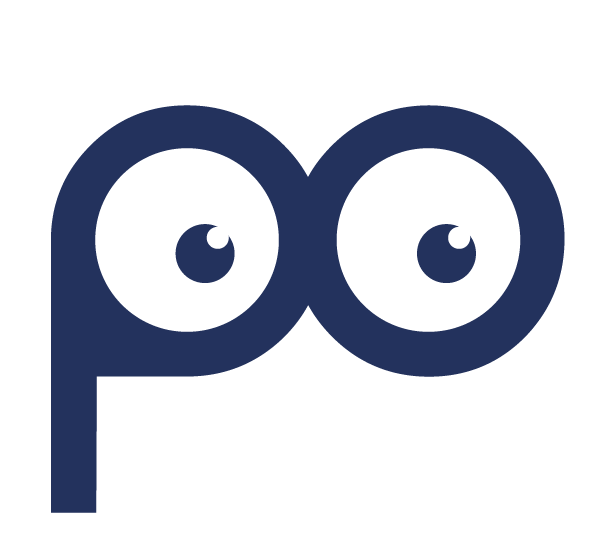Psychometric profiling for marketing
Psychometric profiling for marketing allows you to identify the main character traits and expected behavior of prospects and customers to set the communication strategy and marketing campaigns.
Imagine what you could achieve from your marketing efforts if you had the power to read what was going through your customers’ minds at any given moment?
If the competitive advantage in marketing is the ability to establish one-to-one, personalized communication with the individual customer, technology today allows us to do so by selecting the contents most in line with user preferences.
Do you really know your customers?
Written by Portrait team


Why using psychometric profiling in marketing?
Offering a personalized interactive experience is the main goal of marketing.
People love to feel special and unique, and when a brand personalizes its interaction with a user, creating content or offers targeted to their interests and preferences, the user feels valued and understands that the brand is making an effort to meet their needs .
Additionally, a personalized user experience can increase customer engagement and loyalty. When users receive relevant content and targeted offers, they are more likely to engage with the brand and maintain a long-term relationship.
Personalized marketing can also improve the effectiveness of campaigns, as targeted communications are more likely to drive conversions than generic, non-personalized messages.

How to do psychometric profiling in marketing?
There are several psychometric profiling options for marketing, and the choice depends on the information relevant to your industry and marketing objectives.
Unlike demographic profiling, which categorizes the public on the basis of “generic” variables, such as age and gender, psychometric profiling measures personality traits (such as: openness, conscientiousness, extroversion, agreeableness, neuroticism), detects interests and lifestyle of a subject, identifies possible opinions, beliefs and values.
In a nutshell, personality profiling allows us to understand why customers behave in a certain way.
Knowing what drives people allows you to design highly effective and targeted marketing campaigns.

The advantages of psychometric profiling in marketing
The real advantage of psychometric profiling in marketing lies in the ability to detect the predominant character trait of the individual customer in real time.
This allows you to seize the opportunity at the right time, proposing exactly what the customer expects, or what he would most likely accept.
The use of psychometric profiling in marketing can lead to a series of tangible benefits, including: the increase in the redemption of marketing campaigns, the increase in the conversion rate, the development of brand loyalty, the personalization of the user experience.
Psychometric profiling in marketing is a powerful tool for improving communication, increasing audience engagement and achieving tangible results.


Resources for psychometric profiling in marketing
There are 5.6 billion Internet users worldwide and approximately half of the world’s population uses social media.
These people shop online, write reviews and emails, share posts on social media…
This is all data you can use to better understand your customers and discover which marketing strategies they will respond to best.
The large amount of data that can be drawn from customer interactions across multiple digital touchpoints provides marketing with an enormous pool of resources to use to test psychometric profiling.
E-mails, messages, telephone recordings, reviews and complaints, posts and comments on social media are just some examples of sources that can be used to detect the profile of individual interlocutors and prepare personalized communication accordingly.

How does psychometric profiling work in marketing?
The detection of the customer’s personality made possible by PortrAIt is based on the analysis of the function words used in speech, which identify the way in which one expresses oneself, without making judgments on the content; furthermore, the greater frequency of function words (adverbs, conjunctions, articles) allows you to obtain a result in real time, bringing an enormous advantage in terms of customisation.
Psychometric profiling allows you to detect character traits that indicate a propensity towards a particular communication style (logical vs emotional) or susceptibility towards gain/no gain or loss/no loss type messages.
This allows communication and marketing contents to be adapted to the user profile in a targeted manner. For example, if a user is more inclined to respond to emotional messages, you can tailor communication based on this preference.
Psychometric profiling does not stop at understanding the public, but goes further, identifying expected behavior and preparing the “next best actions” to be performed.
This means being able to anticipate the actions that users might take and prepare the relevant responses in a coherent and effective way. For example, if a customer has shown interest in a certain product, it will be possible to prepare an offer or incentive message specifically aimed at converting that interest into a purchase.


What are useful psychometric traits for marketing?
Drawing a psychometric profile means giving a unique description of the attitudes, habits and interests of an individual or group. It is a collection of consumer values and behaviors that tell us who would be most receptive to our company’s offering.
With “psychometric traits” we identify the psychological and cognitive attributes of a consumer that reveal his or her beliefs, values and goals.
In marketing, psychometric traits are used along with demographic data to understand and market consumer purchasing habits.
While demographics explain who your buyer is, psychometric traits explain why they buy. Demographic data includes objective data such as gender, age, income and marital status. Psychometric information includes subjective data such as belief systems, values, goals, and attitudes.
Some examples of psychometric traits useful for marketing can refer to the subject’s sensitivity towards a logical or emotional communication style, the ability to develop loyalty towards a brand, openness to innovation, tendency to perceive dissatisfaction towards people and products (churn risk).

KPIs OF PSYCHOMETRIC PROFILING IN MARKETING
Psychometric profiling and data management are key to optimizing marketing campaigns and improving key performance indicators by understanding consumer preferences and adapting communication strategies.
Among the main KPIs recorded:
- increase in marketing campaign performance by up to 50%
- average cart increase of 48%
- 11% increase in conversion rate
In conclusion, psychometric profiling identifies the correlation between communication preferences and consumer personality and makes it available to marketing to obtain a significant competitive advantage in terms of user experience and offer personalization.
Source: Inside marketing
More articles from our blog

How do you profile your customer?
La profilazione psicometrica per il customer care consente di rilevare lo stato d’animo degli utenti in tempo reale e adattare azioni e risposte alle aspettative del singolo cliente.

Psychometric profiling for sales
Psychometric profiling for sales is positioned as a powerful tool for gaining in-depth customer insights, allowing companies to adapt their sales strategies in a more targeted and effective way.

Psychometric Profiling for Customer Care
Psychometric profiling for customer care allows you to detect the mood of users in real time and adapt actions and responses to the expectations of the individual customer.

FOLLOW US ON LINKEDIN
Curious to know more about psychometric profiling in marketing? Follow us on Linkedin.

Offices
Viale Fulvio Testi, 128 20092 – Cinisello Balsamo (MI)
Headquarter
Via Meuccio Ruini 10, 42124 - Reggio Emilia (RE)
